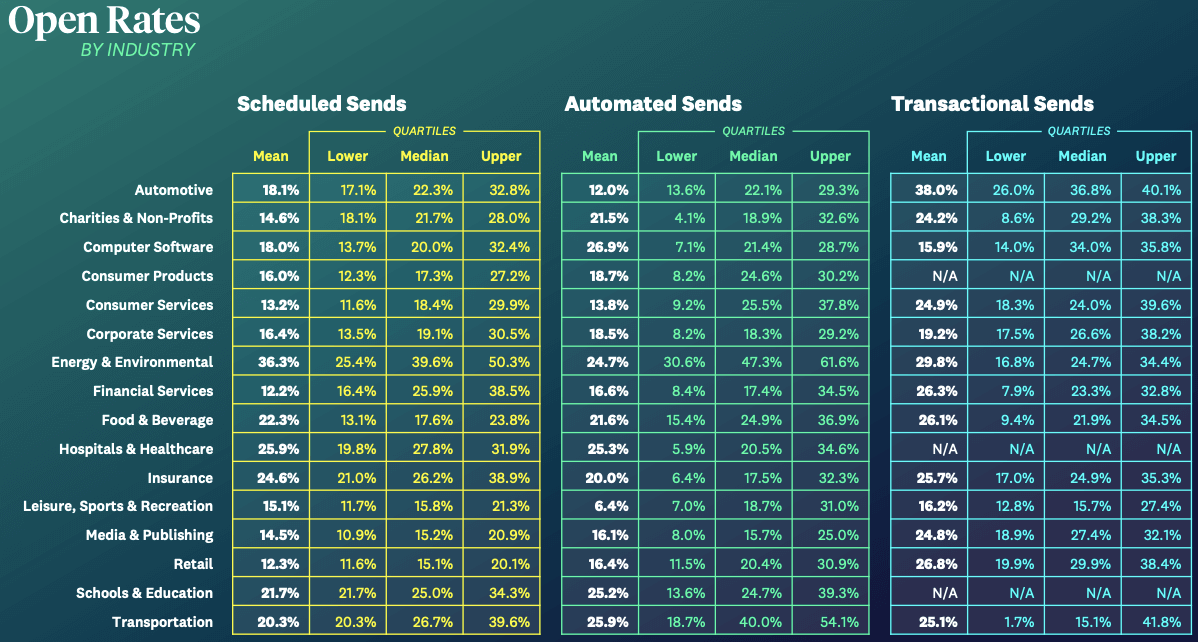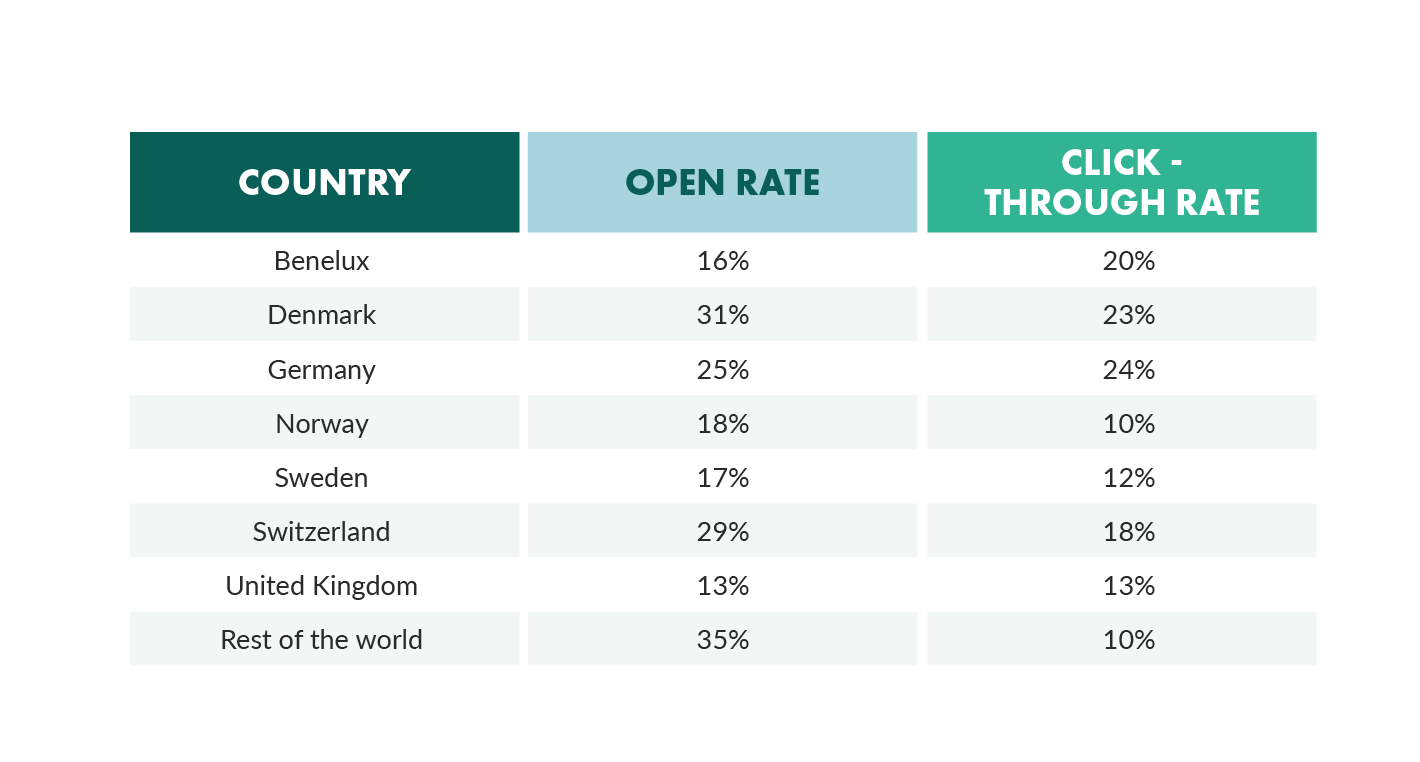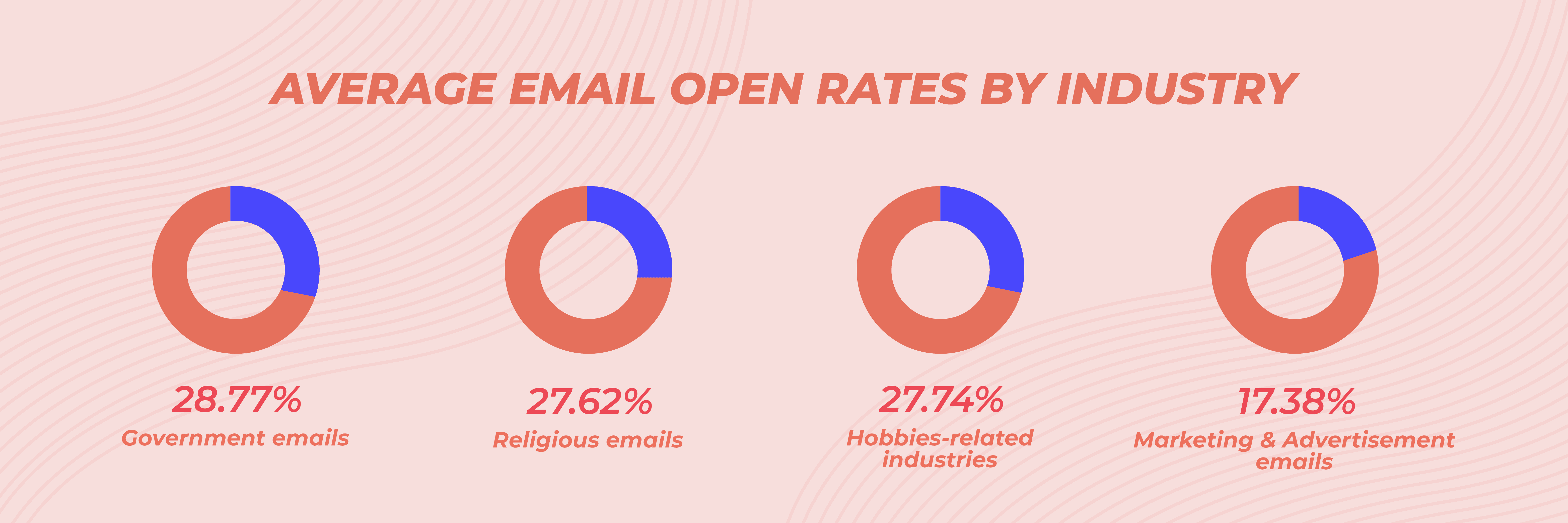A good open rate for email campaigns varies by industry and audience. Generally, 15-25% is considered good.
Understanding what constitutes a good open rate for email campaigns is crucial for marketers. Open rates indicate how well your subject lines and email content engage your audience. A good open rate means your emails are being noticed and read.
This metric helps you gauge the effectiveness of your email strategy. By knowing the benchmarks, you can set realistic goals and work towards improving your campaigns. Let’s dive deeper into what makes a good open rate and how you can achieve it. A higher open rate typically indicates that your subject lines are compelling and relevant to your audience. Additionally, it’s important to consider other metrics, such as the good reply rate for cold emails, as they can provide further insight into the overall engagement of your recipients. By analyzing these factors together, you can fine-tune your approach and maximize the success of your email outreach efforts.
Introduction To Email Open Rates
Email marketing is a powerful tool for businesses. But how do you measure its success? One key metric is the email open rate. This rate tells you how many people open your emails. Understanding this metric helps improve your campaigns.
Importance Of Open Rates
Open rates show how effective your subject lines are. They indicate if your email reaches the audience. A high open rate means your emails are engaging. It suggests that subscribers are interested in your content. This metric helps gauge the success of your email strategy.
Factors Influencing Open Rates
Several factors affect email open rates. Here are some key elements:
- Subject Line: A catchy subject line grabs attention.
- Sender Name: A familiar sender name builds trust.
- Timing: Sending emails at the right time matters.
- Personalization: Personalized emails are more likely to be opened.
- Content Relevance: Relevant content engages your audience.
Focus on these factors to improve your open rates. Analyze your campaigns and adjust accordingly.
| Factor | Impact on Open Rate |
|---|---|
| Subject Line | High |
| Sender Name | Medium |
| Timing | High |
| Personalization | High |
| Content Relevance | Medium |
Monitor these factors closely. Small changes can lead to better open rates. Consistent analysis and improvement are key.
Industry Benchmarks
Understanding industry benchmarks is crucial for email marketers. It helps them gauge the success of their campaigns. Knowing what a good open rate looks like in your industry can set realistic goals. It can also guide strategic decisions to improve your email performance.
Average Open Rates By Industry
Different industries see different open rates. According to recent data, the average open rate across all industries is around 20-25%. Industries such as government and healthcare often see higher rates. They can reach up to 30% or more. On the other hand, retail and marketing emails often see lower open rates. They average around 15-20%. Knowing these benchmarks helps you understand how your campaigns compare.
Comparing B2b And B2c
B2B and B2C emails perform differently. B2B emails usually have higher open rates. This is because they often target smaller, more focused audiences. The average open rate for B2B emails is around 25-30%. B2C emails often target a broader audience. Their open rates are usually lower, averaging around 15-20%. Understanding these differences can help you tailor your strategies better.
Improving Open Rates
Improving open rates for email campaigns is crucial for effective communication. A good open rate ensures your message reaches your audience. Let’s explore some strategies to boost your open rates.
Crafting Compelling Subject Lines
Subject lines are the first thing recipients see. They determine whether the email gets opened. A compelling subject line should be clear and intriguing.
- Keep it short and sweet. Aim for 5-7 words.
- Include action verbs to create urgency.
- Avoid spammy words like “free” or “urgent”.
- Ask questions to spark curiosity.
- Use numbers or lists. For example, “5 Tips for Better Sleep”.
Testing different subject lines can also help. A/B testing lets you see which ones perform better.
Personalization Techniques
Personalization makes your email feel tailored to the recipient. It increases engagement and open rates.
- Use the recipient’s name in the subject line.
- Segment your email list based on interests or behavior.
- Send emails based on past interactions.
Here are a few more advanced techniques:
- Personalized product recommendations based on past purchases.
- Dynamic content that changes based on the recipient’s preferences.
Personalization makes the recipient feel valued. It shows you understand their needs.
Timing And Frequency
Understanding the right timing and frequency for your email campaigns can significantly improve your open rates. Sending emails at the right time and with the right frequency ensures that your audience is engaged without feeling overwhelmed.
Best Times To Send Emails
Choosing the best time to send emails is crucial for high open rates. Studies show that certain times of the day and week are more effective.
| Day | Best Time |
|---|---|
| Monday | 8 AM – 10 AM |
| Tuesday | 10 AM – 12 PM |
| Wednesday | 1 PM – 3 PM |
| Thursday | 9 AM – 11 AM |
| Friday | 10 AM – 12 PM |
These times are based on user activity. People are more likely to check their emails during these hours.
Optimal Email Frequency
Finding the optimal email frequency is key. Sending too many emails can annoy your audience. Sending too few can make them forget about you.
Here are some guidelines to help you:
- Start with one email per week
- Monitor open and click rates
- Adjust frequency based on engagement
Remember, every audience is different. Testing and monitoring are essential. You might find that your audience prefers emails more often or less often.
A good rule of thumb is to prioritize quality over quantity. Make sure each email provides value to your audience.
Segmentation Strategies
Segmentation strategies can significantly impact the success of your email campaigns. By dividing your audience into smaller groups, you can tailor your messages more effectively. This approach can lead to better open rates and higher engagement.
Targeting Specific Audiences
Targeting specific audiences involves creating groups based on shared characteristics. These can include age, location, or interests. By addressing the unique needs of each group, your emails become more relevant. This relevance can increase the likelihood of your emails being opened and read.
For example, if you run a clothing store, you might segment your list by gender. Men and women often have different preferences. Sending tailored messages to each group can improve engagement. It shows you understand their needs and preferences.
Behavioral Segmentation
Behavioral segmentation involves grouping subscribers based on their actions. These actions can include past purchases, email opens, or website visits. This strategy helps you understand what interests your audience. You can then create targeted messages based on this behavior.
For instance, if a subscriber frequently buys workout gear, you can send them emails about new fitness products. This targeted approach can make your emails more appealing. It increases the chances that your audience will open and engage with your emails.
Both targeting specific audiences and behavioral segmentation can improve your email open rates. They make your messages more relevant and personalized. Your subscribers feel valued and understood, which can lead to better results for your campaigns.

Credit: www.smartinsights.com
Analyzing Open Rate Data
Analyzing open rate data is crucial for the success of your email campaigns. It helps you understand how well your emails are performing and how engaged your audience is. This section will guide you through using analytics tools and interpreting open rate metrics to improve your email marketing strategy.
Using Analytics Tools
Using analytics tools can help you track and measure your open rates effectively. Here are some key tools to consider:
- Google Analytics: Track detailed email performance metrics.
- Mailchimp: Provides open rate reports and insights.
- Constant Contact: Offers comprehensive email analytics.
These tools can provide data on open rates, click-through rates, and more. Use this data to identify trends and patterns in your email campaigns.
Interpreting Open Rate Metrics
Interpreting open rate metrics involves understanding what the numbers mean for your campaign. Here are some key points:
- Average Open Rate: Compare your open rate to industry averages.
- Segment Performance: Analyze open rates for different audience segments.
- Time and Day: Check which times and days get the highest open rates.
Look for patterns in the data. If certain types of emails have higher open rates, focus on those. If open rates are low, consider adjusting your subject lines or sending times.
Use these insights to refine your email strategy. Test different approaches and track the results. This will help you understand what works best for your audience.
Testing And Optimization
Testing and optimizing your email campaigns is crucial. It helps you understand what works best for your audience. A/B testing and continuous improvement strategies can significantly improve your open rates. Let’s dive into these methods.
A/b Testing Methods
A/B testing, also known as split testing, compares two versions of an email. The goal is to see which one performs better. Here’s how you can implement it:
- Subject Lines: Test different subject lines to see which one gets more opens.
- Sender Names: Use different sender names to find out which one is more trusted.
- Content: Vary the email content to see which version engages the audience more.
Use a controlled group to send version A, and another group for version B. Track the open rates and analyze the results.
Continuous Improvement Strategies
Continuous improvement is about making small changes over time. This can lead to significant improvements in your open rates. Consider the following strategies:
- Analyze Data Regularly: Look at your open rates and other metrics frequently.
- Adjust Frequency: Test different sending frequencies to see what your audience prefers.
- Personalization: Use the recipient’s name and other personal details to make emails feel more personal.
These strategies help you understand your audience better. They also ensure your emails are always improving.
Common Mistakes
When running email campaigns, achieving a good open rate is key. But many marketers make common mistakes that hurt their results. Avoiding these can help you reach your audience better and improve your open rates.
Avoiding Spam Triggers
Emails often end up in spam folders. This reduces the chances of them being opened. Certain words and phrases trigger spam filters. Avoid using words like “free,” “buy now,” and “earn money.” Such terms can mark your email as spam.
Also, too many exclamation marks and all caps can be a problem. It is better to use simple and clear language. Make sure your emails look professional and not like spam.
Misleading Subject Lines
Subject lines are crucial. They decide if someone will open your email. Misleading subject lines can damage your reputation. If the content does not match the subject line, readers lose trust.
Avoid using clickbait. Be honest and clear. Provide value in your subject line. This builds trust and encourages readers to open your emails.
Conclusion And Next Steps
Achieving a good open rate for email campaigns is crucial. Analyze your results and adjust your strategies accordingly. This will help improve future campaigns.
Understanding a good open rate for email campaigns can boost your marketing efforts. Now, let’s wrap up the key points and discuss planning future campaigns.Recap Of Key Points
A good open rate varies by industry. Generally, 15-25% is considered average. Factors like subject lines, personalization, and timing affect open rates. Monitoring and analyzing these elements can improve your results.Planning Future Campaigns
Start by reviewing your current campaign data. Identify what works and what doesn’t. Focus on crafting compelling subject lines. Personalize your emails to make them relevant to your audience.Segment your email list based on user behavior. Send targeted content to each segment. Test different send times to find when your audience is most engaged. Use A/B testing to compare different strategies.Regularly review your metrics. Adjust your tactics based on the insights you gain. Stay updated with industry trends and adapt your approach as needed.By following these steps, you can improve your email open rates. Consistent effort and analysis will lead to better engagement and success. “`
Credit: www.superoffice.com

Credit: www.superoffice.com
Frequently Asked Questions
What Is A Good Email Open Rate?
A good email open rate typically ranges between 15% to 25%. However, this can vary by industry. Always strive to improve your email content and subject lines to boost open rates.
How Can I Improve My Email Open Rates?
To improve email open rates, craft compelling subject lines, personalize emails, and ensure content is relevant. Also, send emails at optimal times when your audience is most likely to check their inbox.
What Factors Affect Email Open Rates?
Several factors affect email open rates including the subject line, sender name, email content, and timing. Ensuring high-quality and relevant content can significantly improve open rates.
Why Are Email Open Rates Important?
Email open rates indicate how many recipients are engaging with your emails. Higher open rates suggest that your content is relevant and engaging to your audience.
Conclusion
Achieving a good open rate takes effort and consistency. Keep your subject lines clear and engaging. Personalize your emails to connect with your audience. Test different strategies to see what works best. Track your results and make adjustments as needed.
Remember, small changes can lead to better engagement. Stay patient and focused. Success comes with persistence. Happy emailing!
